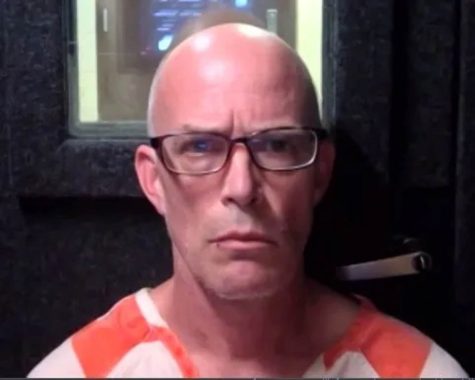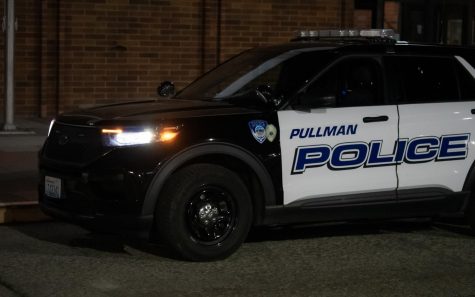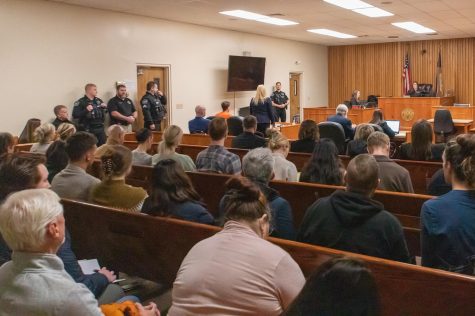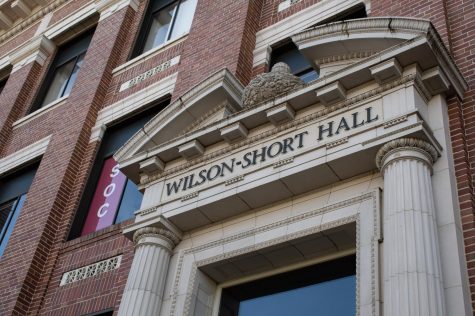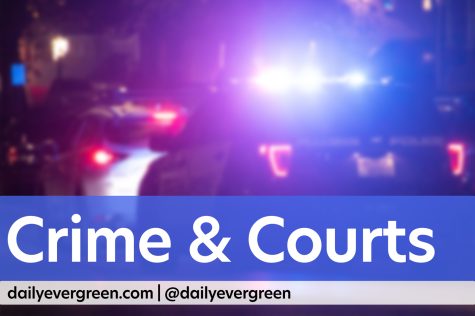Pullman schools focus on student safety
Police, District work to increase security at PHS, new elementary
ARIPIRALA SAI RAM | THE DAILY EVERGREEN
Pullman Police Cmdr. Chris Tennant says the department likes being asked to assist with new school security measures
June 14, 2018
Following a school shooting resulting in the death of 14 students and three faculty members in February at Stoneman Douglas High School in Parkland, Florida, the issue of school safety has once again been thrust into the spotlight of national discussion.
Helped by the formation of various activist groups in response to the latest incident in what The Washington Post called a “uniquely American crisis” earlier this year, a lot of the discussion has involved findings ways to keep children safe.
Pullman Public Schools Superintendent Bob Maxwell said the district sees safety as the number one priority for their students.
“It’s something that I think is on all of our minds,” he said. “It’s something unfortunately that we have to be aware of and we have to be thinking of in today’s world.”
Maxwell said Pullman Public Schools and the Pullman Police Department have had discussions about the topic and recent renovations to Pullman High School and the construction of Kamiak Elementary School have allowed the pair to make new efforts toward security in local schools.
“The old high school was a security nightmare in the fact that you had so many entrances and exits to the building, there was really no security or control,” Pullman PD Cmdr. Chris Tennant said. “Having safety as something to look at from an architectural point of view is nice.”
Tennant said he thinks improvements are being made and enjoys being a part of the conversation.
“Just being asked to the dance is kind of nice from a law enforcement perspective,” he said. “When these buildings were being built 20 years ago, the police or safety concerns were not part of the planning process.”
In addition to limiting entry points, Tennant and Pullman PD School Resource Officer Scott Patrick said surveillance and monitoring who has access to the building at any given moment play important roles in keeping children safe in schools.
Besides looking at building security measures, Maxwell said the schools prepare their students and staffs for active shooter situations.
“Each situation is unique and not always the same,” he said. “I think if you look at past unfortunate events that have occurred, it’s not exactly the same, so we need to be prepared to adapt to different types of situations.”
The schools, like all public schools in Washington, are required by the state to run a certain number of drills each year, including lockdown drills. Each school in the district has to meet this quota, but often do them on different schedules and at different types of the day in order to create different scenarios for the drills, Maxwell said.
One idea proposed nationwide in the wake of the Parkland shooting was to equip teachers with firearms. However, Maxwell said he doesn’t support the idea.
“Personally and professionally, I don’t think it’s a good idea to arm teachers,” he said. “We haven’t had any parents bring up the subject of arming teachers, other than maybe a few emails in hope that we weren’t looking at arming teachers.”
Patrick said he provides training to teachers and students on active shooter situations, including on how to defend themselves.
He was trained using the Advanced Law Enforcement Rapid Response Training (ALERRT) system, he said.
The system, developed by Texas State University, is made up of three parts on how to respond to an active shooter, Patrick said.
First, one should remove themselves from the area and if they cannot, they should deny access to the location. If the first two steps cannot be carried out, they should be prepared to fight back using objects in the classroom, Patrick said.
Another method in place to help prevent Pullman from going through a tragedy is the ability for students and community members to anonymously report individuals they think may be at risk of carrying out such an attack, Patrick said. This system was put into action recently when it received a tip, but fortunately it turned out not to be a threat.
While it may not have turned out to be a real threat, the ability to anonymously report is important, Patrick said.
“I think the most critical part of that is giving people the ability to report with some level of anonymity,” he said, “because some of those situations are pretty tough.”
Tennant, along with Patrick, said people should look for warning signs in people that they may be planning an attack based on previous incidents around the country.
Some of the warning signs they listed included those who are seen as outsiders and are previous victims of bullying, as well as a majority of school shooting perpetrators being male. However, Tennant warned against seeing a list of signs as definitive rather than a stereotype.
Tennant said one thing people can do to help avoid these tragedies is to treat people better.
“I think one of the things that can make the biggest difference in limiting school violence is getting back to the golden rule,” he said. “Treat people with respect and dignity, treat people how you would like to be treated.”
In addition to how others are treated, Tennant also pointed to the media’s handling of school shootings as a possible motivation for those contemplating such an attack.
Tennant said it’s important for local media outlets to report on the shooter, but suggested the publicity given by national news to those who carry out school shootings in their direct aftermath can be a problem.
“Until we decide as a society not to turn these people into folk heroes and to not provide them all of this individual attention,” he said, “you’re going to find some that find that attractive.”











